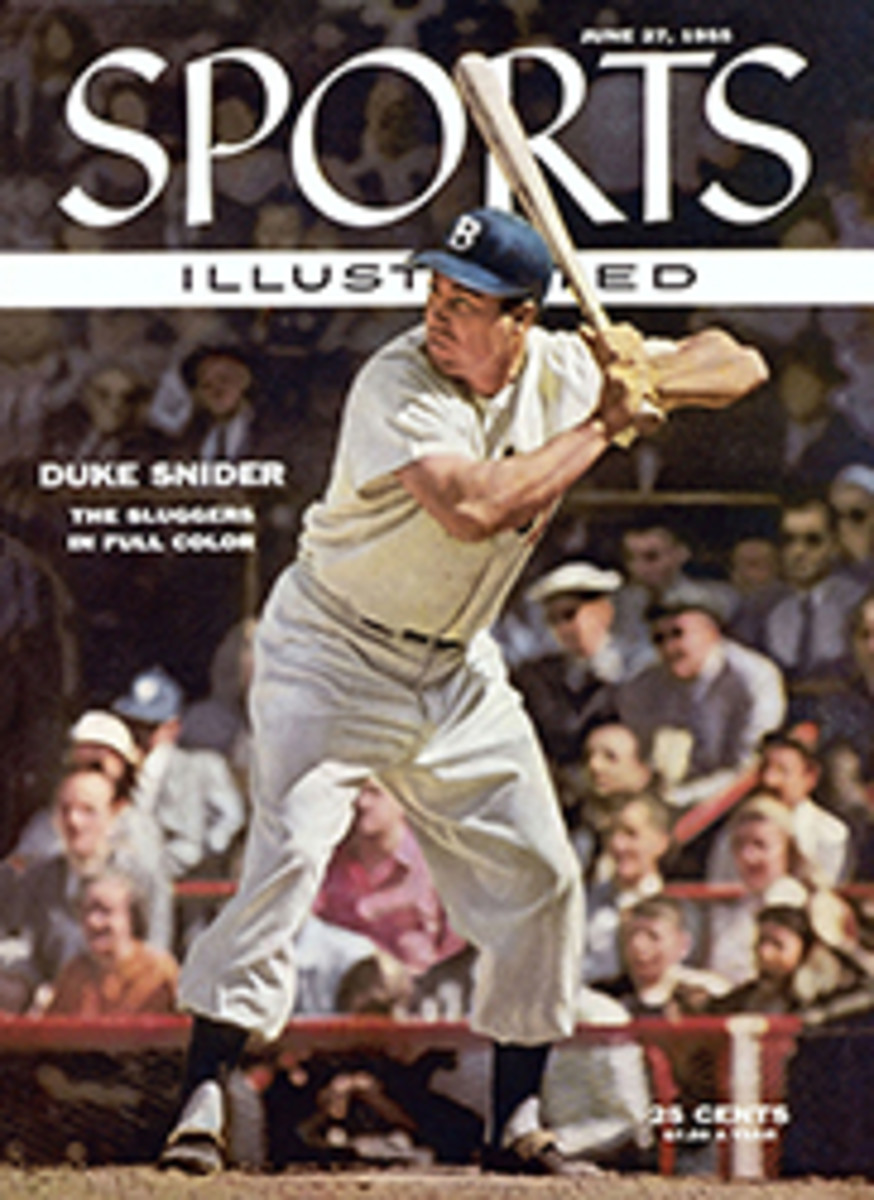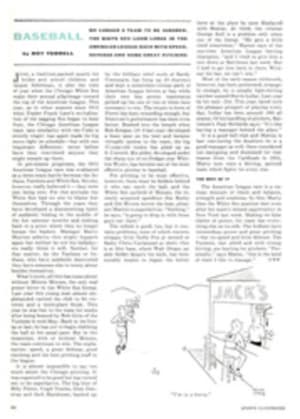
HOW CAN DISASTERS LIKE LE MANS BE PREVENTED? FROM PARIS COMES ONE ANSWER: BRING ROAD RACING BACK TO ITS ORIGINAL PURPOSES
The decision of the French government, after the appalling Le Mans disaster, to suspend road racing until a new set of international rules can be worked out is commendable, but it does not strike at the root of the problem. The real cause of the Le Mans crash lies deeper than the proposed rules changes (see below). In actual fact, this race, the biggest of its kind in the world, has veered further and further away from its original purpose, and the cure for its ills, and those of sports car road racing in general, is to get it back to what it started out—and ought—to be.
The lofty purpose of earlier Le Mans races was to provide a valuable testing ground for strictly production sports cars, so that the European auto industry might pass on to the average owner the benefit of valuable technical lessons learned under far more strenuous conditions than could ever be created on the test bench. The machines that were raced could be bought by anyone with the price; their performance at Le Mans gave a potential owner an honest idea of what he could expect.
THE TRUE SPIRIT VANISHED
But then things changed. The FIA (International Automobile Federation) relaxed its rules to allow models of which only 50 had been built, or of which the manufacturer could show honest intent to produce that number. Finally, the so-called "prototypes" got into the act, and with their coming the true spirit of Le Mans vanished. Today the entries of virtually all leading auto builders, masquerading under the term "sports cars," are camouflaged Grand Prix jobs with more power—and sometimes more speed—than their Formula I counterparts.
Obvious cases in point are Mercedes and Ferrari. The road-racing 300 SLR Mercedes uses the same chassis as the W163 Grand Prix version. Its engine, bored out to 180 cu. in., develops over 300 hp compared with 270 for the single-seat racing job. Its flat-out speed of nearly 200 mph is slightly higher. But because FIA rules require a "sports car" to have two seats, a door and an envelope body, problems of maneuverability, weight distribution and braking have whittled down to nothing the already hair-thin margin of safety of Grand Prix machines. Hence, among other things, the strange, batlike air brakes of the SLR (below), ingeniously located behind the centers of gravity and pressure of the car. These flaps, when used on turns, tend to steady the machine and minimize tail slides, but on highways they would be useless. Ferrari, with its new 269-cu.-in., 365-hp "sports cars," is in the same boat. The latest 180-cu.-in., 270-hp type 300S Maseratis, built almost entirely of Grand Prix components, are equal offenders; so are the 275-hp Jaguars.
Let's take a look at some of the proposed measures to make the races safer. Moving the crowd back from the road to allow a neutral zone will help, but in a high-speed freak crash neither 50 feet of apron nor a 10-foot wall can stop a car from plowing into the crowd. The Le Mans accident was just that—a freak, a one-in-a-million chance. Move people too far back and they lose interest with the diminishing effect of speed. That was the main fault with the U.S. airfield races under SAC.
Widening the road is another gain but here organizers are bucking a fabulously expensive job. Not all road courses are permanent. The cost may be too great.
A wide apron setting the pits well back from the road, so that cars can pull in without obstructing an inch of the freeway, is an absolute must. Le Mans' narrow pit row constitutes a murderous hazard for drivers and spectators alike. It was directly responsible for this year's catastrophe.
By all means let's have separate races for slow and fast cars, though the Le Mans crackup is no argument in favor of this. On the contrary, had Macklin's Austin-Healey been faster, the consequences might have been even worse. However, circumstances do arise where two small cars, battling it out, may run parallel for too long, seriously endangering fast iron.
A PRACTICAL AND SIMPLE WAY
Limiting sports car engine displacement to the same common denominator as Grand Prix jobs—150 cu. in.—is, by itself, a meaningless measure. Manufacturers would build still lighter "prototypes" with even better streamlining. They would find means to squeeze yet more power out of 150 cu. in. Pretty soon we would be back where we started.
There is only one practical way to minimize carnage in racing, and it's a lot simpler than officials would have the public believe. Grand Prix cars should run only on race tracks such as Monza, Montlhéry and the N√ºrburgring—not on closed public roads. Sports car road races should be restricted to bona fide production jobs in the true sense of the word. These should be fully equipped machines, suitable for highway use and available in showrooms. In other words, Turismo-type cars. Even the new FIA "production class" would benefit by adopting the SCCA ruling that at least 500 cars of any given model should be built to qualify under the term. Such a ruling would serve both to restore a reasonable degree of crowd and driver safety, and at the same time give back to sports car racing something of its original meaning and purpose.
PHOTO
MERCEDES 300 SLR, here shown with Levegh just before fatal crash, is only one of many camouflaged Grand Prix machines. A so-called prototype, it is useless on the highway and its aerodynamic brake, visible behind cockpit, is strictly a racing innovation.

